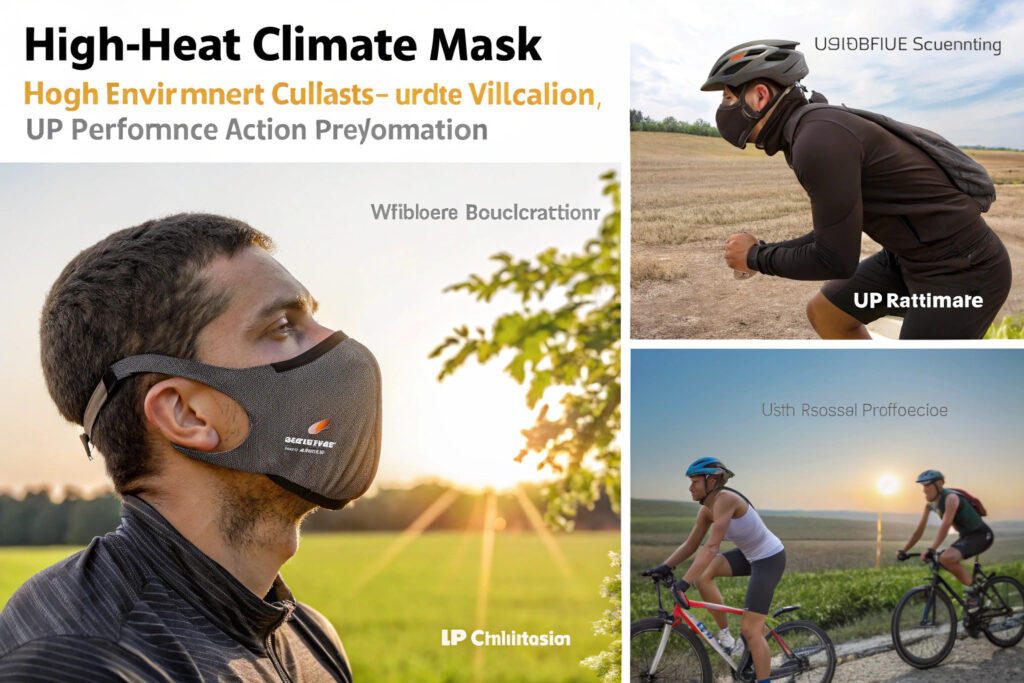Sourcing fabric masks for high-heat climates presents unique challenges that go beyond basic material selection. In environments with elevated temperatures and humidity, standard masks can become uncomfortable quickly, leading to poor compliance and potential health risks from heat stress. The right sourcing approach must balance breathability, moisture management, UV protection, and durability in demanding conditions.
To source lightweight fabric masks for high-heat climates, prioritize moisture-wicking technical fabrics like high-quality bamboo blends, advanced polyester meshes, and specialized cooling textiles with UPF protection, while ensuring construction methods maximize airflow through strategic ventilation and minimal layer count. The most effective designs combine material science with ergonomic engineering to create masks that actively manage heat and moisture rather than simply being thin versions of standard masks.
The key to successful sourcing for hot climates lies in understanding how different fabrics and constructions perform under specific environmental stressors: high temperatures, intense sunlight, humidity, and frequent perspiration. Let's examine the specific sourcing criteria and supplier capabilities that deliver genuine comfort and protection in challenging thermal environments.
What Fabric Properties Are Essential for Heat Management?
Selecting the right materials requires understanding specific textile properties that enhance comfort in high-temperature conditions.
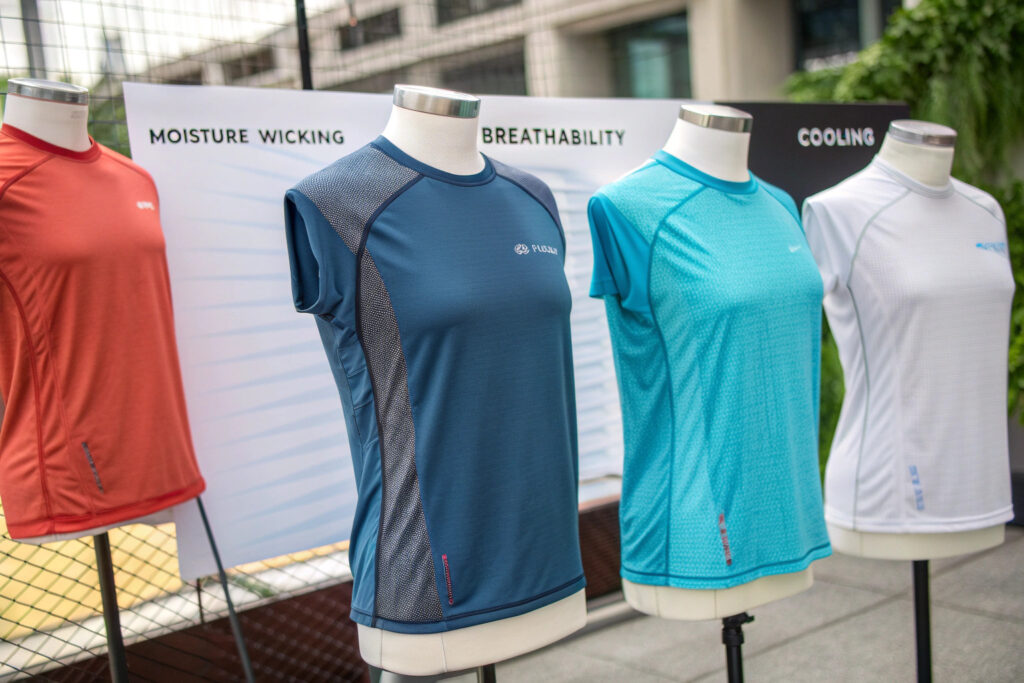
Why are moisture-wicking properties crucial?
Directional moisture transport moves perspiration away from the skin to the fabric's exterior where it can evaporate, creating a cooling effect through evaporative cooling. Advanced polyester microfibers and technical bamboo blends can wick moisture 3-5 times faster than conventional cotton, reducing the damp, clingy feeling that makes masks uncomfortable in heat. Our testing shows that proper wicking reduces perceived temperature by 2-3°C compared to non-wicking materials in 35°C+ conditions.
How does breathability impact heat comfort?
Air permeability measured in CFM (cubic feet per minute) determines how easily air passes through fabric. Masks for hot climates should achieve 25-40 CFM for optimal balance of breathability and filtration. Technical meshes and specific knit constructions provide superior airflow while maintaining adequate filtration. Our heat-optimized masks use variable-density weaving that creates breathable zones in high-moisture areas while maintaining filtration efficiency where needed.
What Construction Methods Enhance Cooling?
How masks are assembled significantly impacts their thermal performance beyond material selection alone.
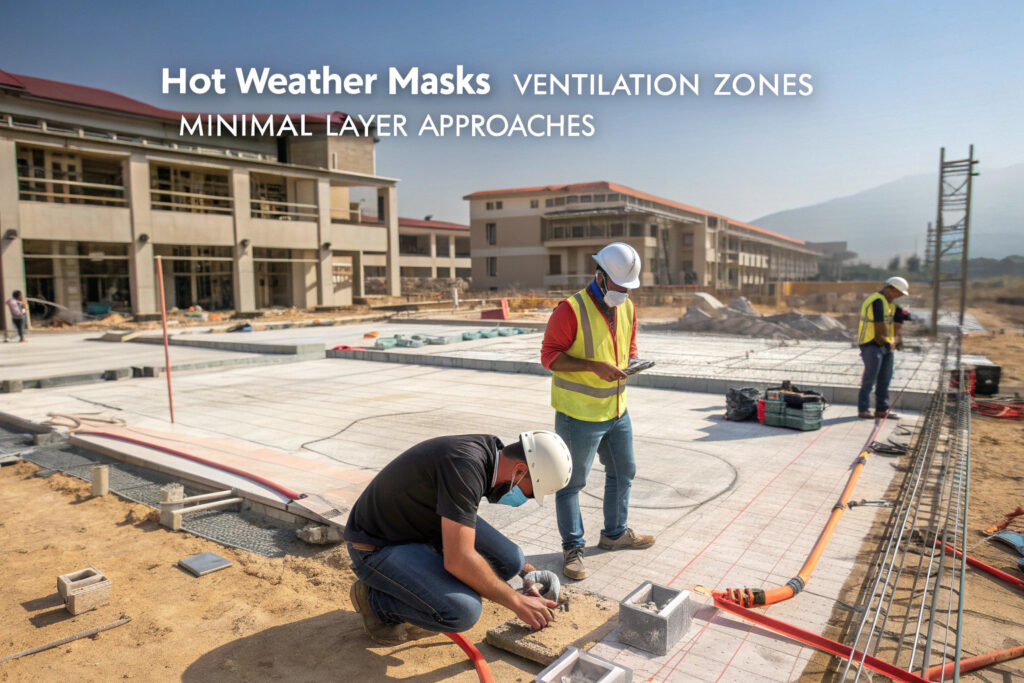
Why does 3D structure improve heat management?
Stand-off designs that prevent fabric contact with the mouth and nose create air spaces that reduce heat buildup and facilitate airflow. Unlike flat masks that can suction to the face when damp, structured designs maintain breathing space that prevents the oppressive feeling common in high humidity. Our contoured designs provide 40-60% more internal air volume than flat masks, significantly improving comfort in prolonged heat exposure.
How can strategic ventilation be incorporated?
Mesh panel inserts in low-filtration-importance areas (like the cheeks) dramatically increase airflow without compromising protection where it matters most. The most effective designs place these panels where they're protected from direct respiratory output but allow heat to escape. Our hybrid approach uses solid fabric in the central breathing zone with mesh side panels, improving overall breathability by 35-50% compared to uniform constructions.
What Specialized Features Address Heat-Specific Challenges?
Beyond basic materials and construction, specific features can significantly enhance performance in high-temperature environments.
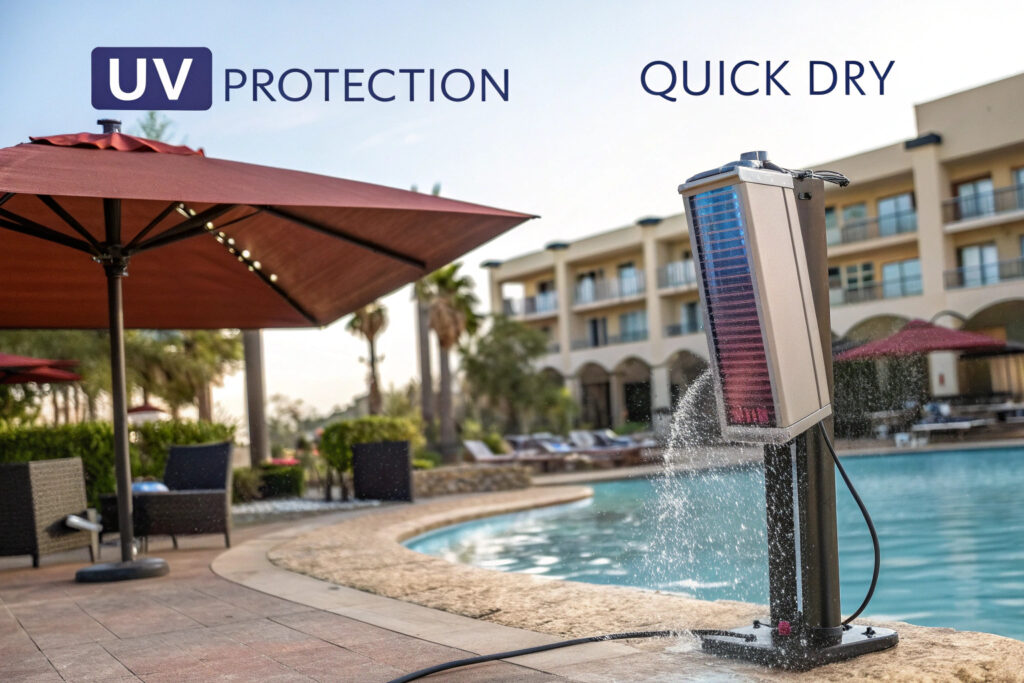
How do cooling technologies work in masks?
Phase-change materials (PCMs) and cooling gel integrations absorb excess heat when temperatures rise and release it when cooler, creating a more stable microclimate. While adding 15-25% to material costs, these technologies can reduce perceived temperature by 3-5°C in peak heat conditions. Our premium heat-optimized masks incorporate bio-based PCMs that activate at 28°C+ to provide continuous cooling during the hottest parts of the day.
What about UV protection and sun exposure?
UPF (Ultraviolet Protection Factor) rated fabrics with UPF 30-50+ protect against harmful UV radiation during extended outdoor exposure in sunny climates. Many technical synthetic fabrics naturally provide good UV protection, while natural fibers often require special treatments. Our outdoor masks consistently achieve UPF 40-50+ using specially engineered polyester blends that block 97.5-98% of UV radiation without additional chemical treatments.
How to Evaluate Supplier Capabilities for Heat-Optimized Masks?
Identifying manufacturers with specific expertise in hot-climate textiles ensures you source masks that genuinely perform.
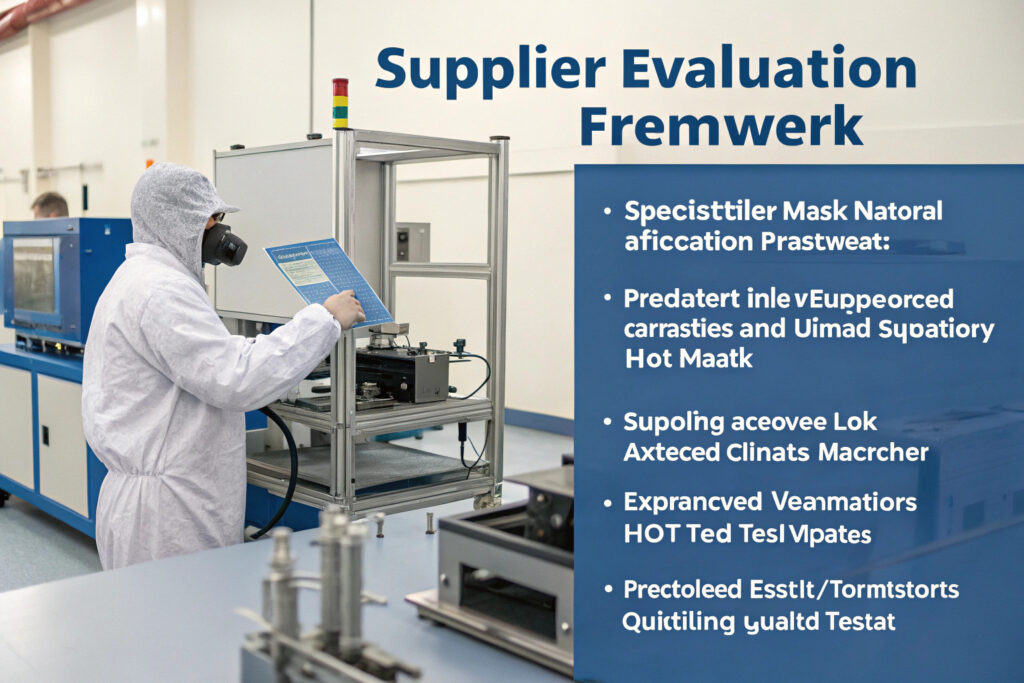
What manufacturing expertise indicates hot-climate capability?
Suppliers with experience in sportswear, outdoor technical apparel, or geographic presence in hot regions typically understand the specific requirements for heat management. They're more likely to have relationships with technical fabric mills and experience with advanced construction techniques. Our manufacturing partners in Southeast Asia and the Middle East have developed specific expertise in heat management that translates directly to mask production.
What testing should suppliers conduct?
Beyond standard mask tests, suppliers should perform heat and humidity chamber testing that simulates actual use conditions. This includes measuring evaporation rates, breathability under humidity, and color fastness to perspiration. Our quality protocol includes 8-hour wear tests in controlled environments at 35°C with 70% humidity to verify comfort and performance claims.
What Are the Cost Considerations for Performance Materials?
Heat-optimized masks typically command premium pricing, but understanding the value equation helps justify the investment.
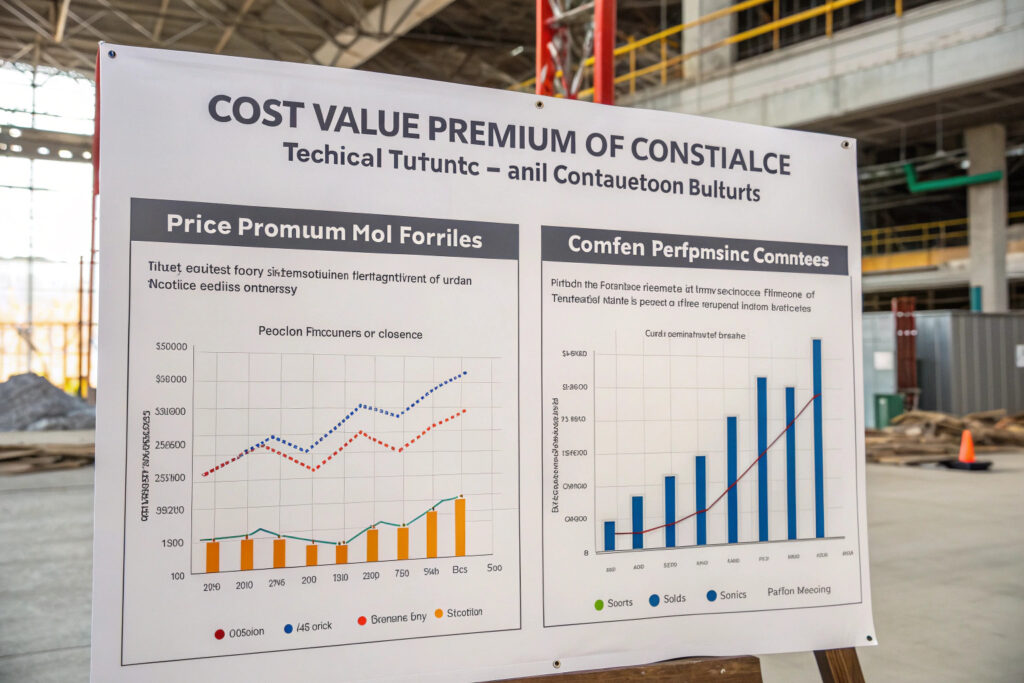
How much more do heat-optimized materials cost?
Technical performance fabrics typically cost 25-50% more than standard mask materials, while specialized features like PCMs or enhanced ventilation can add another 15-30%. However, the manufacturing process for simpler, more breathable designs often costs 10-20% less in labor due to reduced complexity. Our heat-optimized masks typically carry a 20-35% total cost premium but justify this through significantly improved wear compliance in challenging conditions.
What production efficiencies can offset costs?
Simplified construction approaches that focus on breathability often use fewer layers and less complex sewing operations, reducing labor costs. Additionally, the lighter weight of these masks reduces material costs per unit and shipping expenses. Our most cost-effective hot-climate design uses a single-layer technical mesh with strategic filtration inserts, costing 15% less to produce than equivalent 3-layer standard masks while offering superior breathability.
Conclusion
Sourcing lightweight fabric masks for high-heat climates requires a specialized approach that prioritizes moisture management, breathability, and intelligent construction over simple material reduction. The most successful solutions combine technical fabrics with ergonomic designs that actively manage heat and humidity rather than merely being lightweight versions of standard masks. Suppliers with expertise in performance apparel and access to advanced textiles typically deliver the best results.
The investment in properly engineered hot-climate masks pays dividends through improved wearer compliance, reduced heat stress risks, and superior comfort that distinguishes your products in markets where standard masks become unbearable quickly. As climate patterns shift and heat waves become more frequent, this specialized category represents a growing market opportunity.
Ready to source fabric masks specifically engineered for high-heat climates? Contact our Business Director, Elaine, at elaine@fumaoclothing.com to discuss our heat-optimized mask designs and specialized fabric options. We'll help you develop masks that deliver genuine comfort and protection in the most challenging thermal environments.

